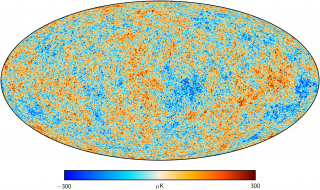Bibcode
Nandakumar, Sangeetha; Eggl, Siegfried; Tregloan-Reed, Jeremy; Adam, Christian; Anderson-Baldwin, Jasmine; Bannister, Michele T.; Battle, Adam; Benkhaldoun, Zouhair; Campbell, Tanner; Colque, J. P.; Damke, Guillermo; Plauchu Frayn, Ilse; Ghachoui, Mourad; Guillen, Pedro F.; Kaeouach, Aziz Ettahar; Krantz, Harrison R.; Langbroek, Marco; Rattenbury, Nicholas; Reddy, Vishnu; Ridden-Harper, Ryan; Young, Brad; Unda-Sanzana, Eduardo; Watson, Alan M.; Walker, Constance E.; Barentine, John C.; Benvenuti, Piero; Di Vruno, Federico; Peel, Mike W.; Rawls, Meredith L.; Bassa, Cees; Flores-Quintana, Catalina; García, Pablo; Kim, Sam; Longa-Peña, Penélope; Ortiz, Edgar; Otarola, Ángel; Romero-Colmenares, María; Sanhueza, Pedro; Siringo, Giorgio; Soto, Mario
Bibliographical reference
Nature
Advertised on:
11
2023
Journal
Citations
14
Refereed citations
12
Description
Large constellations of bright artificial satellites in low Earth orbit pose significant challenges to ground-based astronomy1. Current orbiting constellation satellites have brightnesses between apparent magnitudes 4 and 6, whereas in the near-infrared Ks band, they can reach magnitude 2 (ref. 2). Satellite operators, astronomers and other users of the night sky are working on brightness mitigation strategies3,4. Radio emissions induce further potential risk to ground-based radio telescopes that also need to be evaluated. Here we report the outcome of an international optical observation campaign of a prototype constellation satellite, AST SpaceMobile's BlueWalker 3. BlueWalker 3 features a 64.3 m2 phased-array antenna as well as a launch vehicle adaptor (LVA)5. The peak brightness of the satellite reached an apparent magnitude of 0.4. This made the new satellite one of the brightest objects in the night sky. Additionally, the LVA reached an apparent V-band magnitude of 5.5, four times brighter than the current International Astronomical Union recommendation of magnitude 7 (refs. 3,6); it jettisoned on 10 November 2022 (Universal Time), and its orbital ephemeris was not publicly released until 4 days later. The expected build-out of constellations with hundreds of thousands of new bright objects1 will make active satellite tracking and avoidance strategies a necessity for ground-based telescopes.
Related projects

Anisotropy of the Cosmic Microwave Background
The general goal of this project is to determine and characterize the spatial and spectral variations in the temperature and polarisation of the Cosmic Microwave Background in angular scales from several arcminutes to several degrees. The primordial matter density fluctuations which originated the structure in the matter distribution of the present
Rafael
Rebolo López